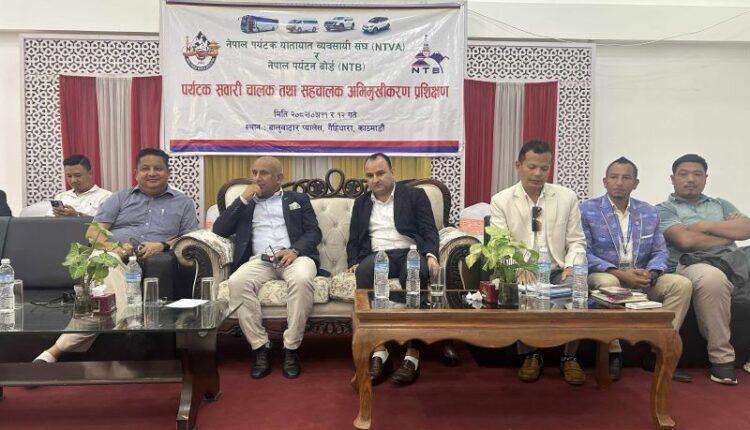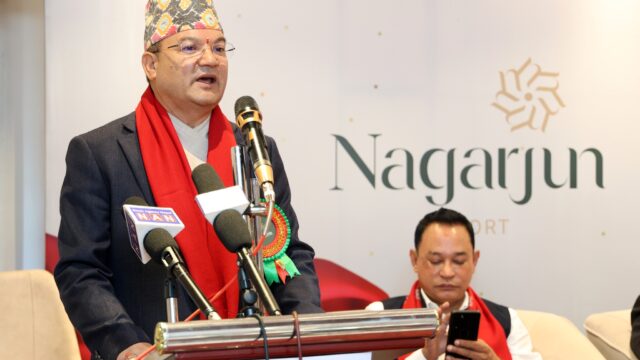In a candid address during a two-day orientation program organized jointly by the Nepal Tourist Vehicle Association and the Nepal Tourism Board (NTB), Chief Executive Officer of NTB, Deepak Raj Joshi, has highlighted a critical gap in Nepal’s tourism sector. Despite increasing investment, the country has not witnessed a corresponding rise in foreign tourist arrivals, Joshi said.
His remarks brought to light an ongoing concern in the tourism industry, the mismatch between investment and actual outcomes. According to Joshi, one of the main obstacles hindering the expected rise in tourist inflow is the lack of basic infrastructure, especially those supporting road transport and overall visitor experience.
Rising Investment, But Disappointing Outcomes
During the program held in Kathmandu, Joshi noted that although both public and private sector investments in tourism have risen in recent years, Nepal has not been able to meet its tourist arrival targets. He attributed this to the slow pace of infrastructure development, particularly in areas frequented by tourists.
“We failed to bring in tourists as per the target due to the lack of essential tourist infrastructures,” Joshi remarked. “The demand is there, the interest is there, but the support system is not yet fully prepared.” He further added that ongoing infrastructure projects, especially the construction and upgrading of roads across the country, could pave the way for increased tourist arrivals in the next two years. Joshi urged concerned authorities to take proactive and responsible steps toward completing these critical projects on time.
Call for Quality Service and Responsibility
Beyond infrastructure, Joshi emphasized the importance of delivering quality services to enhance Nepal’s tourism experience. He suggested that investment in human resources, especially those involved in direct contact with tourists, is as important as physical development. “Quality service plays a vital role in retaining tourists and building Nepal’s image as a hospitable destination,” Joshi stated. “We must work equally hard in training and service excellence.”
Ensuring Road Safety Through Responsible Driving
The orientation also included important perspectives on tourist safety, particularly related to road travel. Senior Sub-Inspector of Kathmandu Valley Traffic Police Office, Rajeev Bista, focused on the role of tourist vehicle drivers and their assistants in ensuring safety.
Bista highlighted the rising concern over traffic accidents involving tourist vehicles, urging drivers and their helpers to adopt a self-driven sense of responsibility rather than acting merely to avoid penalties. “It will help to reduce accidents if drivers and their helpers become responsible,” he said. “They should follow the rules for their own safety and for the safety of passengers, not just because the traffic police are watching.”
Orientation Focuses on Skills, Safety, and Courtesy
The orientation aimed to equip drivers and their assistants with both theoretical knowledge and practical skills. The goal was to enhance their capacity in managing tourist vehicles safely, professionally, and with proper decorum. Association Chairperson, Bed Raj Bastola, underlined the significance of such programs in raising awareness and improving the standards of service delivery in the field.
“This orientation will provide theoretical and practical knowledge that helps make drivers and their helpers more skillful,” said Bastola. “It also reinforces the importance of following safety measures and maintaining good manners towards tourists.” Bastola also pointed out that assistants or helpers of drivers should be equally responsible for managing passengers, ensuring vehicle hygiene, and addressing tourist concerns during the journey.
Participation and Future Vision
The two-day program saw the active participation of 92 individuals, including both tourist vehicle drivers and their helpers. It offered a platform for interaction between regulatory authorities and service providers, fostering a shared understanding of roles and responsibilities in enhancing Nepal’s tourism experience.
With the country’s post-COVID tourism recovery still in progress, such initiatives are seen as vital in preparing Nepal’s tourism workforce to meet international standards. It is also part of a broader strategy by the NTB and other stakeholders to ensure that Nepal is not just attracting tourists but also providing a safe and memorable travel experience.
Looking Ahead: Infrastructure as a Priority
As Nepal aims to establish itself as a premier destination for cultural, adventure, and eco-tourism, infrastructure remains the cornerstone of sustainable growth. Roads leading to key tourist destinations, sanitation facilities, reliable transportation systems, and digital services are crucial for attracting and retaining foreign visitors.
CEO Joshi’s remarks serve as a timely reminder for policymakers, investors, and industry professionals that investment must be coupled with implementation. Nepal’s natural beauty, cultural wealth, and adventure potential are world-class, but unless supported by reliable infrastructure and trained human resources, the country risks falling short of its true tourism potential.
The message from this orientation is clear: Nepal has the potential, the investment interest, and the talent. What it now needs is coordinated execution, safety consciousness, and a visitor-first mindset. If the recommendations shared by NTB and stakeholders are followed with sincerity, Nepal could well witness a tourism boom in the near future.






